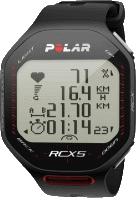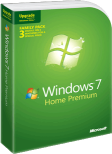Combining GPX and HRM Files into TCX Format

Three of the most common file formats for recording exercise data are HRM, GPX and TCX. HRM is an older proprietary, but open, standard created and maintained by Polar, which deals with heartrate information, as well as speed, cadence, altitude and power. GPX is another older standard which deals primary with geolocation data from GPS receivers. TCX is a newer format that effectively supports all that HRM and GPX support combined, and then some.
My shiny new Polar RCX5 (which I really like) happens to export data (via the Polar WebSync application) as separate HRM and GPX files (for legacy reasons, no doubt). Whereas Strava (which I also really like) supports GPX and TCX imports (amoung others). So of course, I can import my GPX files from the RCX5 to Strava pretty easily, however, that will provide Strava with no heartrate nor cadence data, since the GPX format does not support those.
So the question I faced was: how to combine the GPX and HRM files from my RCX5 to a single TCX file? Since I found no appropriate tools readily available, I wrote my own ;)








